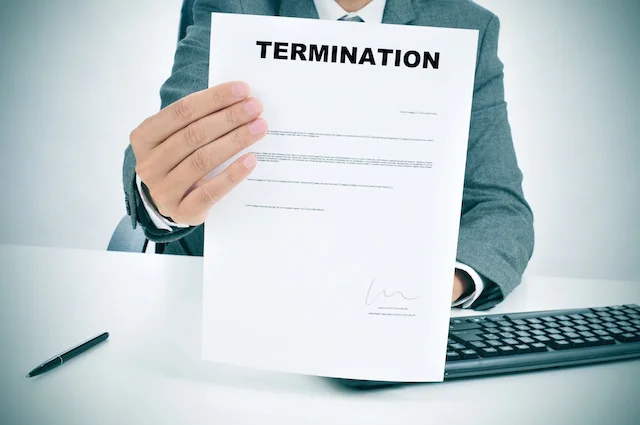Being fired is difficult, but when you believe the termination was unlawful, the stakes get much higher. Proving wrongful termination can be complex, especially in Texas, an at-will employment state where employers have broad discretion to end employment.
However, even in at-will states like Texas, you have rights—and if your firing violated anti-discrimination laws, retaliation protections, or employment contracts, you may have grounds to pursue legal action. The key to winning a wrongful termination claim is solid evidence and a clear strategy.
This blog post breaks down how to prove wrongful termination in Dallas, the types of evidence that carry the most weight, and tips to protect your case.
Understanding Wrongful Termination in Texas
First, it’s important to understand that Texas is an at-will employment state. This means:
Employers can fire employees for any reason, as long as it’s not illegal
Employers do not have to provide cause or warning before termination
Employees can also quit without notice
However, exceptions exist. Terminations are unlawful if they:
Violate federal or state anti-discrimination laws (e.g., fired due to race, gender, religion, disability)
Are retaliatory (firing for reporting harassment or discrimination)
Breach an employment contract or promise of job security
Violate public policy (e.g., firing for refusing to break the law)
Proving wrongful termination means demonstrating your firing falls within one of these exceptions.
Step 1: Establish the Basis for Your Claim
Before gathering evidence, clearly define the legal basis for your claim:
Discrimination: Were you fired because of your protected class? (Race, gender, age, disability, etc.)
Retaliation: Did you report harassment, safety violations, or discrimination, and were you fired shortly after?
Breach of contract: Did your employer violate a written or implied employment agreement?
Public policy violation: Were you terminated for refusing illegal orders or exercising legal rights?
Understanding the claim type helps focus your evidence-gathering efforts.
Step 2: Collect Key Evidence Types
Documentation of Your Job Performance
Good performance reviews, awards, or positive feedback show you were meeting expectations before termination. This helps counter employer claims of poor performance.
Termination Documents
Obtain your termination letter, severance agreement, or any written explanation from your employer. Look for inconsistencies or vague reasons.
Communication Records
Emails, texts, or memos that show your complaint about discrimination, harassment, or retaliation are critical. These demonstrate your protected activity.
Witness Statements
Coworkers or supervisors who witnessed discrimination, harassment, or retaliation can provide valuable testimony.
Company Policies and Handbooks
These documents establish the rules your employer should follow. If the termination violated internal policies, that supports your claim.
Comparative Evidence
Show how employees outside your protected class were treated differently—e.g., they weren’t fired for similar behavior.
Step 3: Create a Detailed Timeline
Chronology matters. Outline key events leading up to and following your termination, such as:
Dates you reported harassment or discrimination
Dates of any warnings or disciplinary actions
Changes in treatment at work
The termination meeting and reasons given
A timeline helps reveal patterns and suspicious timing.
Step 4: Identify Evidence of Retaliation or Discrimination
Retaliation is often subtle. Look for signs such as:
Being fired shortly after a complaint
Sudden negative performance reviews despite previous praise
Exclusion from meetings or projects
Demotion or reduced hours
Discrimination might show through biased comments, differential treatment, or direct evidence of prejudice.
Step 5: Seek Legal Assistance Early
Wrongful termination cases involve nuanced laws and deadlines. An experienced Dallas employment attorney can:
Evaluate your evidence and claim strength
Guide you on filing with the EEOC or Texas Workforce Commission
Help gather additional evidence through discovery
Represent you in settlement talks or court
Don’t delay; filing claims often has strict deadlines.
Additional Tips for Strengthening Your Case
Keep copies of all documents and communications related to your employment and termination.
Avoid bad-mouthing your employer publicly or on social media. This can undermine your credibility.
Be honest with your lawyer about all facts. Transparency helps build the strongest case.
Prepare for the employer’s defense. They may argue poor performance, restructuring, or misconduct as the real reason for firing.
Final Thoughts
Proving wrongful termination is a challenging process but entirely possible with the right evidence and strategy. By understanding your legal rights, gathering detailed documentation, and consulting with an experienced attorney, you stand the best chance of holding your employer accountable and receiving the compensation you deserve.
If you’ve been fired unfairly in Dallas, don’t hesitate to seek legal advice promptly. Your future and your financial security may depend on it. We recommend wrongful termination lawyers Dallas.

